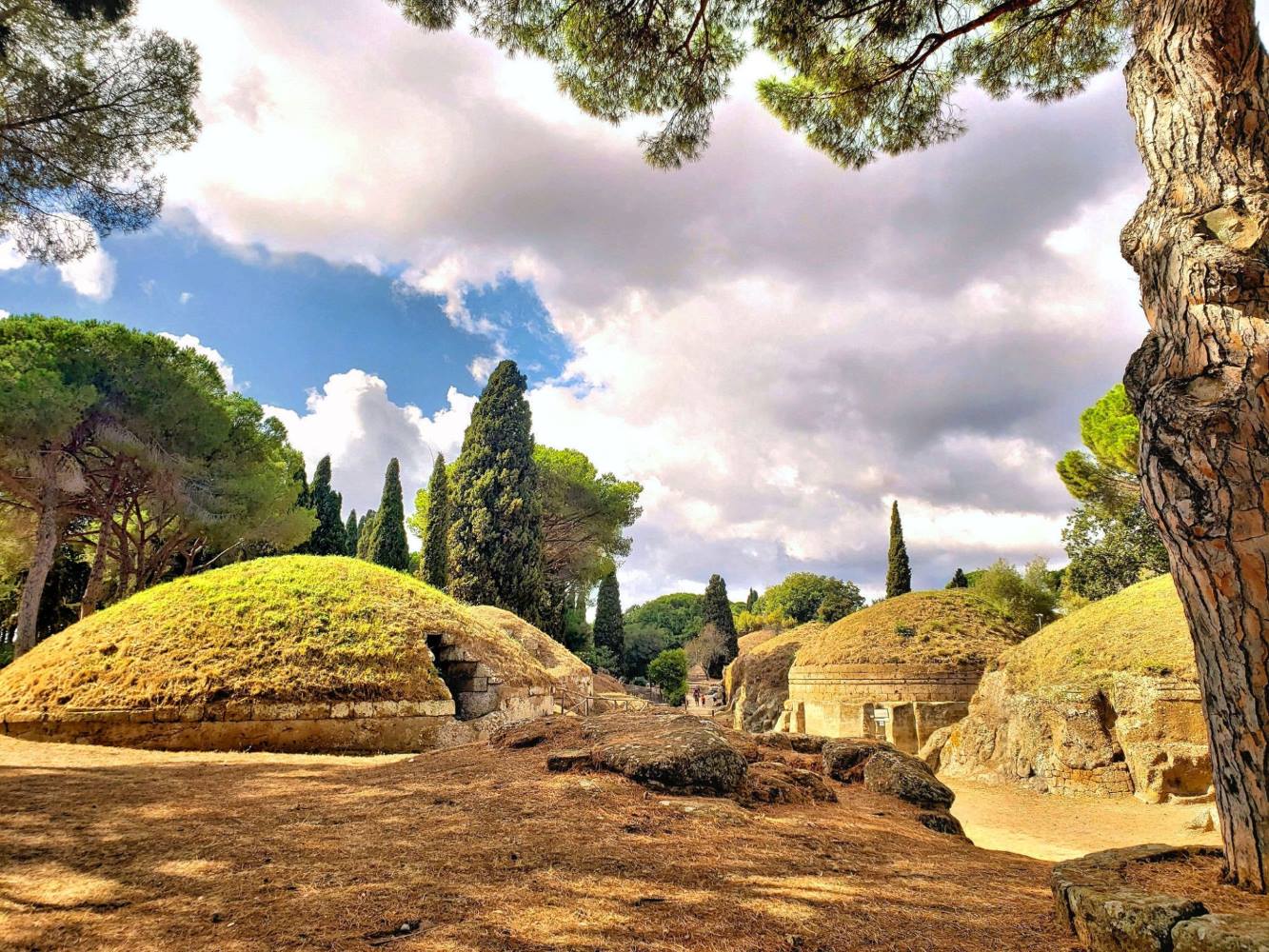
Ever wondered about the mysteries buried in ancient Etruscan necropolises? These ancient burial sites, scattered across Italy, hold secrets of a civilization that thrived long before Rome's dominance. The Etruscans, known for their rich culture and advanced society, left behind elaborate tombs filled with artifacts, frescoes, and inscriptions. Each necropolis offers a glimpse into their beliefs, daily life, and artistry. From the intricate carvings to the vibrant wall paintings, these burial grounds are a testament to the Etruscans' reverence for the afterlife. Join us as we uncover 24 intriguing facts about Etruscan necropolises that will transport you back in time and reveal the hidden stories of this fascinating civilization.
Etruscan Necropolises: Ancient Cities of the Dead
Etruscan necropolises are fascinating remnants of an ancient civilization that thrived in Italy before the rise of Rome. These burial sites offer a glimpse into the Etruscans' beliefs, customs, and daily life. Let's explore some intriguing facts about these ancient cities of the dead.
Origins and Significance
Understanding the origins and significance of Etruscan necropolises helps us appreciate their historical and cultural value.
- The Etruscans were an ancient civilization that flourished in central Italy between the 8th and 3rd centuries BCE.
- Necropolises, or "cities of the dead," were large burial grounds where the Etruscans buried their dead in elaborate tombs.
- These burial sites were often located outside the city walls, reflecting the Etruscan belief in separating the living from the dead.
- The most famous Etruscan necropolises are located in Cerveteri and Tarquinia, both UNESCO World Heritage Sites.
Tomb Architecture and Design
The architecture and design of Etruscan tombs reveal much about their society and beliefs.
- Etruscan tombs were often designed to resemble houses, complete with rooms, furniture, and decorations.
- Many tombs were carved directly into the rock, creating intricate underground chambers.
- The walls of these tombs were often adorned with frescoes depicting scenes from daily life, mythology, and the afterlife.
- Some tombs featured elaborate stone carvings and sculptures, showcasing the Etruscans' artistic skills.
Burial Customs and Practices
Etruscan burial customs and practices provide insight into their views on death and the afterlife.
- The Etruscans believed in an afterlife where the dead would continue to live much like they did in life.
- Tombs were often filled with personal belongings, such as jewelry, weapons, and household items, to be used in the afterlife.
- Funerary rituals included feasts and games, which were believed to honor the deceased and ensure their safe passage to the afterlife.
- The Etruscans practiced both inhumation (burial) and cremation, with the choice often depending on the period and region.
Art and Symbolism
The art and symbolism found in Etruscan necropolises offer a window into their religious beliefs and cultural values.
- Etruscan tomb paintings often depicted banquets, hunting scenes, and athletic competitions, symbolizing the joys of life and the hope for a similar afterlife.
- Many tombs featured images of deities and mythological creatures, reflecting the Etruscans' religious beliefs.
- The use of vibrant colors in tomb paintings demonstrated the Etruscans' appreciation for beauty and their desire to create a pleasant environment for the dead.
- Symbols such as the double axe and the spiral were commonly used in Etruscan art, representing concepts like power and eternity.
Discoveries and Excavations
Archaeological discoveries and excavations have uncovered many secrets of the Etruscan necropolises.
- The discovery of the Regolini-Galassi Tomb in Cerveteri in 1836 revealed a wealth of Etruscan treasures, including gold jewelry and bronze artifacts.
- Excavations in Tarquinia have uncovered over 6,000 tombs, many of which contain well-preserved frescoes.
- The Tomb of the Leopards in Tarquinia is famous for its vibrant wall paintings depicting a banquet scene with musicians and dancers.
- Modern technology, such as ground-penetrating radar, has allowed archaeologists to locate and study previously hidden tombs without damaging them.
Legacy and Influence
The legacy and influence of the Etruscan necropolises continue to be felt in modern times.
- Etruscan art and architecture influenced Roman culture, particularly in the areas of tomb design and funerary practices.
- The study of Etruscan necropolises has provided valuable insights into the social structure, economy, and daily life of the Etruscan civilization.
- Many Etruscan artifacts discovered in necropolises are now housed in museums around the world, allowing people to appreciate their artistic and historical significance.
- The preservation and study of Etruscan necropolises help ensure that the legacy of this ancient civilization continues to be remembered and understood.
Etruscan Necropolises: A Glimpse into the Past
Etruscan necropolises offer a fascinating peek into ancient Italy. These burial sites, with their intricate tombs and artifacts, reveal much about Etruscan culture, beliefs, and daily life. From the Tomb of the Leopards to the Banditaccia Necropolis, each site tells a unique story. The Etruscans' advanced engineering and artistry are evident in their tomb designs and decorations. These necropolises also highlight their views on the afterlife, showing a society that valued both the living and the dead. Visiting these sites provides a tangible connection to a civilization that thrived long before Rome's dominance. Whether you're a history buff or just curious, exploring Etruscan necropolises is like stepping back in time. So next time you're in Italy, consider adding these ancient wonders to your itinerary. You'll walk away with a deeper appreciation for a culture that laid the groundwork for much of Western civilization.
Was this page helpful?
Our commitment to delivering trustworthy and engaging content is at the heart of what we do. Each fact on our site is contributed by real users like you, bringing a wealth of diverse insights and information. To ensure the highest standards of accuracy and reliability, our dedicated editors meticulously review each submission. This process guarantees that the facts we share are not only fascinating but also credible. Trust in our commitment to quality and authenticity as you explore and learn with us.


